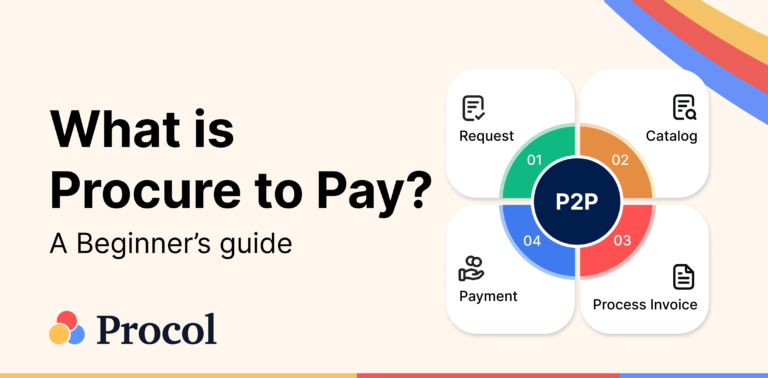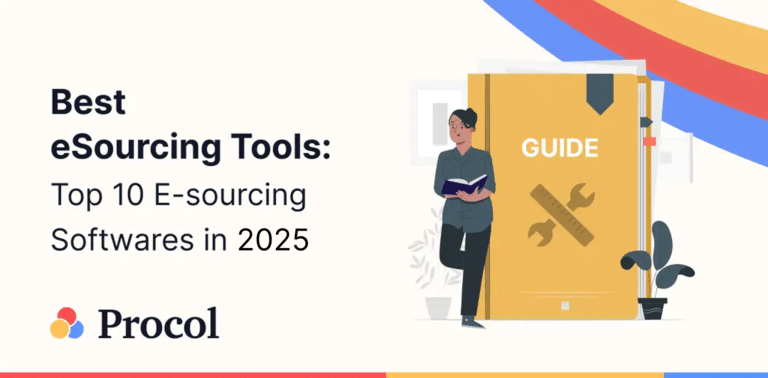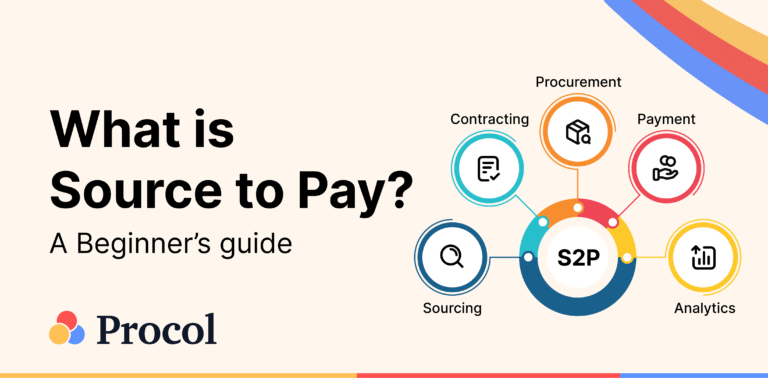Procol • April 15, 2025
Direct Procurement Vs Indirect Procurement: Unlocking the Difference

Do you often need help understanding the core difference between direct procurement and indirect procurement? Is it confusing to comprehend what real-world business purposes direct and indirect procurement solve and how to apply them without knowing the kind of function they address? You’re not alone. Businesses often grapple to understand the difference between direct and indirect procurement, examples of direct and indirect procurement, their usage in everyday operations and their impact on the organization’s bottom line.
With this comprehensive guide, we’ll not only decipher the direct and indirect procurement definition, but also unlock the distinction, review what purpose each one of them solves, and how you can develop a proper direct procurement vs indirect procurement strategy to enhance your company’s efficiency, productivity, and overall profitability.
But before we dive deep into learning about these two types of procurement, it is vital to understand the highly involved process of procurement.
What is procurement?
Procurement refers to various actions or processes involved in acquiring goods and services essential for a business to operate. It includes identifying needs, specifying requirements, conducting market research, evaluating suppliers, negotiating contracts, and monitoring and managing supplier relationships. Procurement is a critical component in business as it enhances spending transparency and capitalizes on steady movements in the supply chain. Depending on the business model and how the organization intends to use the items purchased, supply chain professionals categorize procurement as direct procurement or indirect procurement.
Let’s decode and take a closer look at direct vs indirect procurement:
What is direct procurement?
Direct procurement is the process of acquiring goods/services that a company needs to make its end product. It includes purchasing raw materials such as metal, fabric, plastic, and paper that go straight to the end customers after production. The cost and efficiency of direct procurement heavily influence the profitability and performance of a company. If the direct procurement procedure is stalled, the company’s business is hampered.
Direct procurement is a fundamental component of physical manufacturing industries, as it creates tangible products and generates revenue. Most businesses place significant emphasis on direct procurement because of the pivotal role it plays in exerting influence on the quality of the final product, the consumer experience, and availability. This process is directly proportional to revenue and profit streams, thereby underscoring its importance in the success of a business. Additionally, to ensure a steady supply chain and possession of high-quality materials, it is critical to establish strong and enduring relationships with key suppliers when it comes to direct procurement. Such relationships can be instrumental in the seamless execution of the procurement process, thereby contributing to the overall success of a business.
Example of direct procurement
Here are some direct procurement examples in everyday business:
- An automobile manufacturing company purchasing mechanical components like uncut steel to manufacture vehicle parts.
- Purchasing machinery, equipment, and tools to produce the goods or services a business offers
- Outsourcing and subcontracting labor on a construction site
- A textile manufacturer buys cotton and silk as raw materials to produce certain apparel. Their direct procurement would be large quantities of textiles and cloth material, which would be processed and sewed before reaching the market.
What is indirect procurement?
Indirect procurement refers to the acquisition of non-essential services or inputs that aren’t directly utilized in producing a company’s end product but are necessary to support its day-to-day operations. It comprises administrative materials such as office supplies, internal development services such as employee training programs, or equipment upkeep such as software updates vital to maintaining operational efficiency. Indirect procurement plays a significant role in ensuring the smooth manufacturing of direct materials.
Indirect procurement activities often require a different approach with an emphasis on supplier management relationships and cost reduction through strategic sourcing and vendor management.
Examples of indirect procurement
Here are some indirect procurement examples in everyday business:
- Payment of utilities like gas, water, electricity, and maintenance for an office premise
- General office supplies (stationery, furniture, and office equipment)
- HR functions like internal recruitment, professional development training
- Fees for purchasing and maintaining hardware (computers, printers, phones) and software (SaaS subscriptions such as Atlassian, HubSpot, or Slack)
- Travel and transportation, such as meeting and business trip expenses
- Additional resources such as books and posters
What exactly is the difference between direct procurement and indirect procurement?
What distinguishes direct procurement from indirect procurement? In summary, direct procurement deals with acquiring raw materials to be delivered to customers, while indirect procurement is concerned with ensuring day-to-day operations. The crucial difference between indirect procurement and direct procurement lies in their management, relevance, and impact on the company’s financial performance.
Here are some of the differences between direct vs indirect procurement, along with a list of direct procurement vs indirect procurement examples:
| Differentiator | Direct Procurement | Indirect Procurement |
|---|---|---|
| Definition | Direct procurement refers to the detailed process of acquiring goods and services that a business needs to make its end product | Indirect procurement refers to the acquisition of non-essential services or inputs that aren’t directly utilized in the production of a company’s end product but are necessary to support its day-to-day operations |
| Organizational setup | Direct procurement is typically centralized and strategic, with dedicated teams that have a proper plan of action with a strict budget | Indirect procurement is often decentralized and handled by multiple internal stakeholders across departments. It is more ad-hoc with individual budgets and fewer protocols |
| Strategic importance | Direct procurement items are critical to production hence, affect the company’s profit margins in case of disruption | While indirect procurement items do not cause immediate production interruptions, they can significantly impact the company’s bottom line. Inefficiencies or wastages can affect a company’s profit margins |
| Volume | Direct material is procured in large quantities but at a lesser frequency | Indirect material is procured in less quantity but in a higher frequency |
| Supplier relationship | The procurement team works closely with suppliers to ensure clear communication about the delivery timeline and continuity of material needs. A lasting relationship is vital to managing the supply chain | For direct procurement teams, success is the basis cost savings, inventory management, and contract and delivery KPIs |
| Spend visibility | Direct procurement gets greater visibility and investment as it is a revenue generator | Despite having a significant spend, indirect procurement is often overlooked |
| Performance measurement | For direct procurement teams, success is the basis of cost savings, inventory management, and contract and delivery KPIs | For indirect procurement teams, success is the basis of procurement compliance, maverick spend reduction, stakeholder satisfaction and process efficiency. |
| Industry specification | For industries such as manufacturing, construction, and retail, direct procurement is paramount | The likes of IT companies, recruitment agencies, and businesses that provide professional services prioritize indirect procurement |
| Examples | For direct procurement teams, success is the basis of cost savings, inventory management, and contract and delivery KPIs | Purchase of office furniture and other supplies, Payments on utilities, Employee improvement & training costs |
With this table, we hope to have simplified your confusion around direct vs indirect procurement, the difference between direct and indirect spend, and the difference between direct and indirect buying.
Understanding the impact of indirect vs direct procurement on business
Direct procurement plays a pivotal role in determining an organization’s financial performance by managing expenses associated with product sales. An efficient and streamlined direct procurement process ensures the production of superior quality products, timely delivery, increased profits, and heightened customer satisfaction. Conversely, indirect procurement is a pillar that holds the weight of a business’s day-to-day operations on its shoulders. Although it does not impact the cost of goods sold, economizing on indirect expenses can enhance a company’s profit margin. The more teams save on indirect expenses, the higher the company’s profit margin. Therefore, it is imperative to keep track of all business expenses, whether direct procurement or indirect procurement.
However, indirect procurement is often overlooked and doesn’t receive as much attention and investment as direct procurement.
Let’s understand some possible challenges that contribute to this notion.
Challenges in Indirect Procurement
A survey by McKinsey revealed since 2011, indirect spend has been growing by an estimated 7 percent per year globally. That is because indirect spending is scattered across various locations, business units, and categories, making it difficult for procurement teams to identify and keep track of such expenses. As a result, the struggle to effectively monitor the spending and mitigate its negative impact on the company’s financial health is enormous.
Mentioned below are some roadblocks that hinder indirect procurement’s smooth functioning.
- Involvement of multiple stakeholders and commodity groups: Indirect procurement has an impact on the daily operations of stakeholders. Managed by multiple internal departments such as HR, marketing, finance, accounts, technology and other business units, it leads to a decentralized approach, making it difficult to keep track of procurement activities across different categories and teams.
- Maverick’s spending and lack of supplier performance: Researchers have observed that many teams and stakeholders purchase indirect materials, leading to irregular buying behaviour from business units. This can be attributed to the absence of dedicated procurement teams and maverick spending policies. These factors result in complex supplier relationships, poor supplier performance, and increased procurement risks.
- Missed savings opportunities: Indirect procurement can be complex to manage due to a lack of transparency and accountability. Unlike direct procurement, where transactions involve high monetary value, indirect procurement transactions often have lower value and volume with varied frequency, making them difficult to track. This leads to difficulties for procurement teams in tracking spending activity across categories and developing strategies for spending optimization.
Thus, to generate significant cost savings and bottom-line growth, businesses need an optimized strategy and strong budgetary controls to monitor this large expense category called indirect procurement.
Indirect Procurement Strategy
To enhance the overall ability of indirect procurement, stakeholders must perceive indirect procurement as a strategic business partner.
Here are some indirect procurement strategies that can help regulate indirect procurement amongst internal teams.
- Aligning key goals and objectives: It is critical to ensure that procurement teams’ and stakeholders’ goals and objectives are aligned to achieve efficient indirect procurement operations. Additionally, providing the necessary skills, knowledge, and expertise to the indirect procurement teams can help them manage demands effectively across all categories, teams, and stakeholders in the procurement lifecycle.
- Consolidate spend categories: Consolidating spend categories can significantly assist in reducing unnoticed maverick spending. By managing the sourcing for each category across various channels, procurement teams can enhance their purchasing power and negotiate more favorable terms, resulting in cost reductions. This process can lead to a more efficient supply chain and better cash flow tracking.
- Conducting a spend analysis: This step involves analyzing a company’s spending history and procurement records. Procurement teams can identify potential savings opportunities by analyzing past spend activity and negotiate with active suppliers more effectively.
- Investing in the right e-procurement solution: In today’s world, managing procurement spend manually is no longer a viable option. Procurement teams must invest in the right e-procurement software solution to ensure success in supplier management, spend management and analysis and reporting. Such tools centralize all your procurement processes, indirect spends, analyzing spend categories, and assist in devising effective strategies.
- Nurturing supplier relationships: Indirect spend typically involves short-term relationships with suppliers and is primarily transactional in nature. This often leads to ineffective negotiation practices and creates procurement roadblocks in the production line. Organizations can negotiate favorable contracts and collaborate more effectively by nurturing supplier relationships to gain better pricing and ensure a reliable supply chain.
Now that we’ve touched upon direct vs indirect sourcing in such detail, it is imperative to touch base on another concept that is also found confusing: direct sourcing and indirect sourcing.
What is direct vs indirect sourcing?
Direct sourcing means going directly to the source to purchase goods or services needed for the course of business. Instead of using a third-party, or a middleman, the sourcing team directly reaches out to the suppliers or providers of that good or service, conducts interviews, reviews them and hires them directly. The company gains more control over its supply chain and supplier management by finding a direct source for its direct materials.
Indirect sourcing means reaching out to a third-party vendor or a specialist agency to procure a service or a product for them. It includes wholesalers or distributors who purchase from the manufacturer and then supply to you.
Conclusion
The best transformation is one that is driven from within. This thought is valid not just for homo sapiens but also with organizations. As industries evolve, businesses that champion the optimization of processes with strategies from within will be the ones to propel toward greater success. Procurement is one such operation, and when managed soundly, it adds indispensable value by enhancing an organization’s efficiency, productivity, and overall profitability.
Hence, be it direct or indirect procurement, there has to be a proper balance in the management of both to allow an organization to run through its complete procurement cycle with minimal interruptions.
Procol is India’s leading procurement software that helps companies manage spend across categories and find new avenues of savings.
Visit Procol here or speak directly with their team.
Explore more from Procol
Discover expert tips, how-to guides, industry insights, and the latest procurement trends.

What is Procure-to-pay (P2P)? An Ultimate Guide
Procure to pay is the process from procurement of materials needed...

Best eSourcing Tools: Top 10 eSourcing Software in 2025
Discover top 10 e-sourcing tools and esourcing platforms necessary for efficient...

What is Source-to-pay in 2025? An Ultimate Guide
Source to pay is the process of sourcing vendors to procure...



















